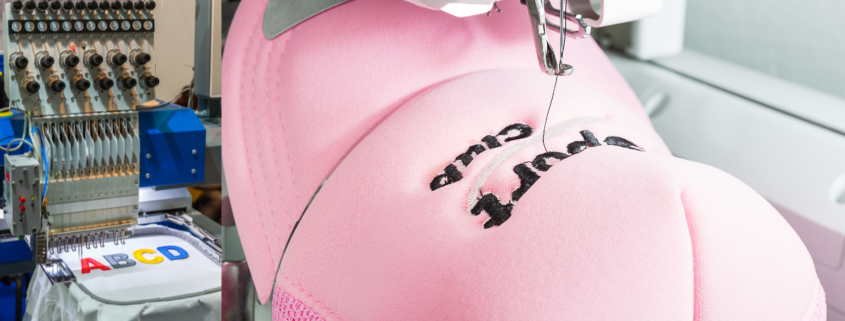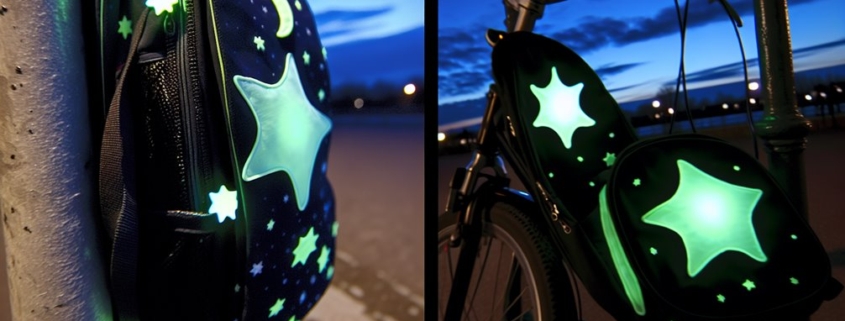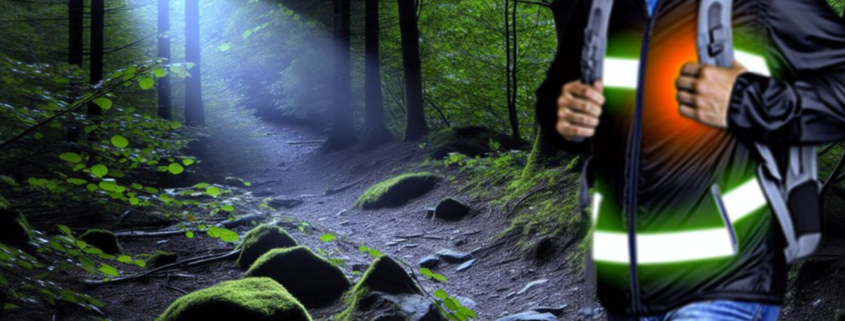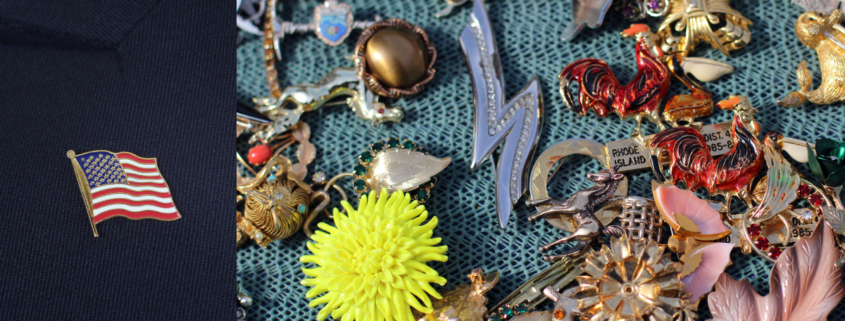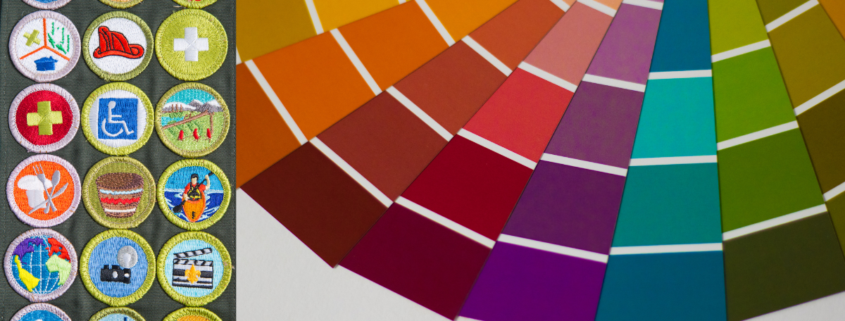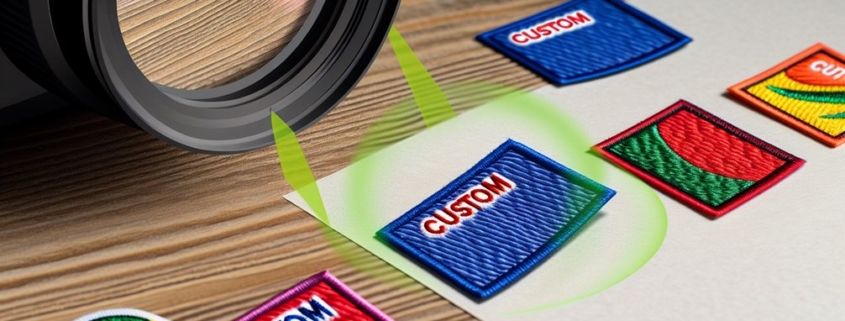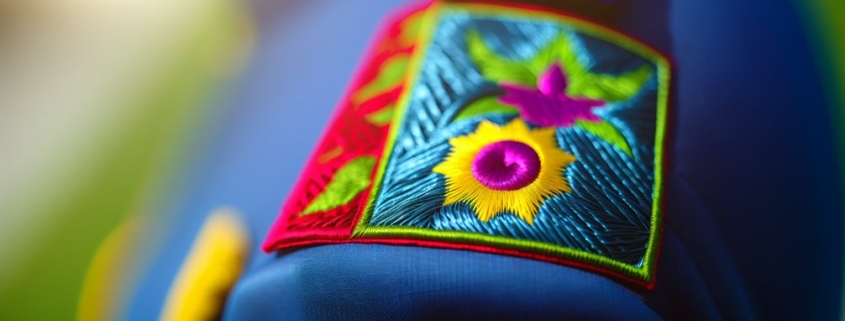Custom patches offer endless possibilities for personal expression. Vintage patchwork or embroidery enlivens the design on jackets, while strategic placement on hats can create stunning visual contrasts. Sneakers transform with creatively positioned patches on the heel, while denim can be upcycled with themed patches. Bags become unique with focal patch clusters, and Velcro hook offers easy interchangeability.
This is just the beginning; let’s discover creative ideas about patches that can rebrand stuff around you.
Fashionable Jacket Enrichment
Upgrading jackets into fashionable ornament has become a prominent trend. It offers a unique way to personalize outerwear. Among the most popular enhancements are vintage patchwork and embroidered designs, which allow individuals to express their personal style while adding a touch of nostalgia and artistic flair to their garments. Vintage patchwork involves the careful selection and arrangement of fabric pieces, often sourced from older textiles, to create a visually appealing mosaic on the jacket’s surface. This method not only showcases individuality but also promotes sustainability by repurposing materials that might otherwise go to waste.
Embroidered designs, on the other hand, involve intricate stitchwork to form patterns or images on the jacket. These designs can range from simple motifs to elaborate scenes, offering endless possibilities for customization. Embroidery adds texture and depth to the jacket, making it stand out in a crowd.
Transforming Hats With Patches
Patches have become a versatile tool for transforming hats into unique fashion statements. The strategic use of patch placement and color combinations can turn ordinary headwear into eye-catching hats that reflect personal style. Custom patches offer endless possibilities for creativity, allowing individuals to make bold statements or subtle enhancements to their headwear. Understanding how to apply patches to hats effectively involves several considerations.
Sneaker Customization Ideas
Sneaker customization with patches is an exciting and creative way to express individuality while elevating the aesthetic appeal of footwear. By focusing on unique sneaker colorways and strategic patch placement, you can transform a standard pair of sneakers into a personalized statement piece.
Shoe patches are usually made of two types of custom patches: soft rubber PVC or embroidered. PVC is more valued due to its sturdy material and waterproof feature. While embroidery patches can not be heat-pressed on sneakers, stitching is recommended.
What Colors Are Recommended for Sneaker Patches?
Selecting the right colorway is essential; it can harmonize or contrast with the patches used, thereby influencing the overall visual impact. Bold, vibrant colors can make patches stand out, while subtler hues may create a cohesive look.
What Is the Best Patch Placement on Sneakers?
Patch placement requires thoughtful consideration to maintain balance and design integrity. It is important to choose areas on the sneaker that will not only enhance its appearance but also endure wear and tear. Common locations include the heel, tongue, and sides, where patches can accentuate the shoe’s natural lines. However, it is crucial to verify that patches do not interfere with the sneaker’s functionality or comfort.
- It is advisable to use high-quality patches that can withstand regular use and washing.
- Considering the sneaker’s material is significant, as some surfaces may require special adhesives or sewing techniques to guarantee patches remain securely attached.
Upcycling Denim With Creativity
While sneaker customization offers a canvas for personal expression, upcycling denim presents a unique opportunity to breathe new life into worn-out garments. This process promotes sustainability by reducing waste. Patches are used to fix ripped clothing; another effective method is the use of custom patches to enhance the appeal of denim items. Here are four creative ways to incorporate denim patchwork and embroidered designs into your upcycling projects:
- Patchwork Revival: Combine different denim pieces to create a patchwork design on jackets or jeans. This not only covers worn areas but adds a trendy, artistic flair.
- Embroidered Accents: Use embroidered designs to accentuate pockets or seams. This technique allows you to infuse personal style while reinforcing parts of the garment that experience significant wear.
- Themed Creations: Choose a theme, such as floral or geometric patterns, and apply patches accordingly. This cohesive approach can transform an ordinary piece into a statement garment.
- Strategic Placement: Place patches over stains or tears to disguise imperfections. This method extends the life of your denim while adding a layer of individuality.
Bag Personalization Techniques
Another great way to learn about custom patches is by upgrading accessories to the next level. Innovative bag personalization techniques can blend the functionality and style of bags. This is a great idea to transform your old antique bags into unique expressions of personal taste. However, strategic patch placement is key to achieving great results.
One effective strategy is to focus on symmetry. By placing patches evenly on both sides of a tote, for instance, you create a balanced look. Another approach is to apply patches to areas prone to wear and tear, thereby reinforcing the material while adding visual interest. Clustering patches in one area, such as the bottom corner or the flap, can create a focal point that draws attention. Here is a quick review of the technique and its benefits.
Technique | Description | Benefits |
Symmetrical Design | Evenly placing patches on both sides of the bag | Creates visual balance |
Reinforcement Spots | Applying patches on high-wear areas | Increases durability |
Focal Clusters | Grouping patches in specific areas | Draws attention to design details |
I would highly recommend using aesthetic patches for this purpose. That way, you can make ordinary bags look brand-new.
Versatile Velcro Attachments
An idea of multiple usage is Velcro custom patches. This patch backing type allows for easy patch placement and removal, catering to fashion enthusiasts who desire flexibility. Understanding velcro system is essential for ideal results. When selecting velcro for patches, consider the following factors:
- Patch Sizes: Choose velcro that matches the dimensions of your patches to guarantee secure attachment and prevent edges from peeling.
It is recommended to cover the entire backing of the patch with a Velcro hook for longer connectivity and a perfect pair.
- Textile Compatibility: Verify the velcro hook is suitable for the fabric of the apparel to maintain garment integrity and avoid damage.
Soft backers like polyester for woven and dye-sublimated patches need extra care to sew Velcro attachments.
- Color Coordination: Select velcro that complements the patch and garment colors to maintain a cohesive appearance.
Usually, Velcro pair is available in black and white pairs. To match the patch color palettes, you can get a Velcro set dyed in the required colors.
Unique Sleeve Decorations
Incorporating unique sleeve decorations into apparel can greatly enhance a garment’s visual appeal. This idea will get your warm arms expressing personal flair. By strategically using sleeve graphics and thoughtful patch placement, clothing can transform from ordinary to extraordinary. Sleeve decorations serve artistic touch, enabling wearers to convey messages or showcase affiliations directly on their attire.
Things To Consider Before Patching the Sleeves
When considering patch placement on sleeves, it is important to evaluate the garment’s design and fabric. The placement should complement the piece without overwhelming it. For instance, a single, bold patch can serve as a statement on a plain sleeve, while multiple smaller patches might create a dynamic pattern on a more subdued background. It is essential to maintain balance and harmony in design to guarantee the garment remains visually appealing.
Selecting the right sleeve graphics is also significant. Consider the theme or message you wish to express, and choose graphics that align with that vision. Whether opting for embroidered motifs or printed designs, the graphics should be to withstand wear.
Artistic Patch Layering
Artistic patch layering frequently is a sophisticated, approachable idea to enhancing apparel with depth and texture. By strategically utilizing patch placement and texture combinations, individuals can create visually appealing designs that stand out. To achieve the desired effect, consider the following tips:
- Experiment with Patch Sizes: Using a variety of patch sizes can create a dynamic look. Larger patches can serve as focal points, while smaller ones add detail and intricacy.
- Play with Texture Combinations: Mixing different textures, such as embroidered and woven patches, will add a tactile element to your apparel, making it more engaging to the touch and visually interesting.
- Layer Colors Thoughtfully: Choose complementary or contrasting colors for your patches to enhance their visual impact. Layering similar shades can create a subtle gradient, while bold contrasts can make each patch pop.
- Consider Patch Placement: Strategic placement is key to successful layering. Avoid overcrowding by spacing patches appropriately, allowing each one to be appreciated individually while contributing to the overall design.
Seasonal Patch Themes
Building on the creative potential of artistic patch layering, seasonal patch themes offer an opportunity to align apparel with the changing seasons, adding a thematic flair to garments. Utilizing holiday motifs and seasonal colors allows clothing to not only reflect personal style but also celebrate the distinctiveness of each season. For instance, autumnal patches might feature rich oranges, deep reds, and golden yellows, capturing the essence of falling leaves. Winter themes could embrace cool blues and silvers, with designs like snowflakes or festive holiday symbols.
However, when selecting patches for seasonal themes, it is essential to guarantee that the chosen colors complement the base fabric of the apparel. The harmony between the patch and the garment guarantees that the overall look remains cohesive. Additionally, attention should be paid to the application technique, as improper attachment could lead to premature wear or damage.
You have infinite ways to use custom patches to decorate clothing and accessories. By considering these quick ideas, you can successfully incorporate patches, creating a wardrobe that is both dynamic and reflective over time.

